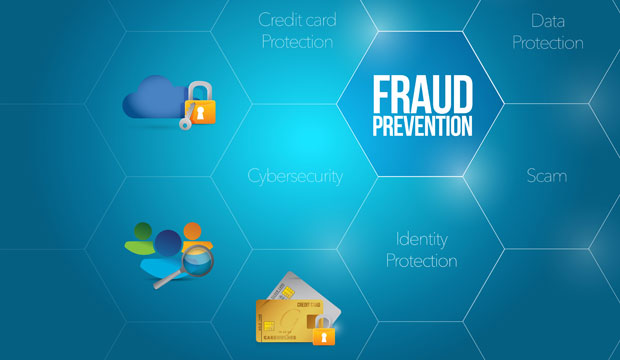What can we expect e-commerce to look like throughout 2021? There’s still a lot of uncertainty in the economy, but some strong trends emerged last year that merchants can build upon now as shoppers solidify new habits and preferences.
For example, half of consumers who originally planned to return to their pre-pandemic in-store shopping routines once COVID-19 is under control now plan to stick with online shopping, per a September 2020 Pymnts report.
That shift in preferences means that e-commerce merchants must keep up with trending ways to market, sell, and prevent fraud. Let’s look at a few of the most important developments and see where they’re going.
BOPIS, Curbside Pickup Bring New Challenges
Buy-online-pickup-in-store (BOPIS) and curbside pickup order volume grew by more than 500 percent from March through June 2020.
Fluctuations in BOPIS order volume seemed to track with shutdowns and reopenings, but they were consistently higher than in 2019. Even after stores can fully reopen, BOPIS volume will likely remain higher than pre-pandemic order levels because some customers now prefer pickup to in-store shopping.
That means omnichannel retailers will need to continue optimizing their online ordering and curbside pickup processes to keep customers loyal. In particular, it’s important for merchants to make sure that the stock on their app or website reflects the in-store reality to avoid disappointing customers with missing items at pickup.
BOPIS is also vulnerable to card-not-present fraud by criminals who use a variety of tactics, including:
- Ordering with a card, then canceling the order minutes before successfully picking it up, to take advantage of the lag in order system updates.
- Using stolen cards to make purchases at several stores in one area during a short time.
- Taking over existing customer accounts to make fraudulent orders that are hard to detect.
Real-time data updates can help prevent post-cancellation pickups. Velocity controls can spot multiple orders at different stores on the same card. Batch analysis can flag multiple orders on different cards that all have the same bank identification number (BIN), an indication of possible BIN fraud. Manual review of flagged orders and extra screening for high-ticket or high-risk orders (electronics, infant diapers, and formula) can reduce merchants’ fraud risk.
Social Commerce ‘Skeleton Keys’
Like BOPIS, social shopping got a boost from the shift to e-commerce and from the extra time many of us now spend on social media. Analysts now project that the global value of social commerce will grow by 31 percent year-over-year to reach $604 billion by 2027. The social sales channel is particularly well suited to apparel, electronics, beauty, and home decor items, according to eMarketer research.
Buying a product or subscription directly from a social post or stream is easy, which is good news for customers but also for fraudsters. That’s because social media accounts are a prime target for organized criminals. Because so many people reuse passwords on multiple accounts, data exposure on one account often gives fraudsters a “skeleton key” to other accounts using the same credentials.
That’s one of the reasons account-takeover (ATO) fraud jumped by more than 280 percent last year. Once they’ve broken into a social media account, thieves can use the payment methods on file and the cover provided by a known customer to make purchases as easily as tapping a shoppable post.
To prevent purchases from taken-over accounts, merchants who use social commerce need filters in place that evaluate user behavior and compare it to their behavior during past sessions. For example, a social media user who has always focused on discounted pet supplies is unlikely to suddenly shift gears and make a high-ticket-value electronics purchase.
By flagging behavioral “mismatches” for manual review, merchants can reduce ATO fraud while still catering to good customers who do shop outside their normal pattern from time to time.
Matching Messaging and Services to the Moment
Last year was the year of the pivot when it came to messaging, offers, and products to promote. Early in the year, shoppers were focused on cleaning and safety products and household staples like canned foods and baking supplies.
As the year wore on, changing consumer priorities drove a series of shopping trends for products like home fitness equipment, wading pools, home appliances, and home office equipment as the reality of extended time at home sank in.
After nearly a year of these rapid changes in demand, customers expect merchants to understand and deliver what they need in real time. So far this year, consumers’ focus is still on the home, but with the possibility of some normalcy by the fall of this year, retailers, travel companies, and other e-commerce merchants should watch for signs that shoppers are making plans for the return to school campuses, theaters, vacation spots, and other public places.
When that happens, merchants will need to pivot again to meet the moment in terms of messaging and promotions — and they may need to adjust their fraud filters to accommodate new buying trends.
One way to help customers solve a common problem right now is by implementing order tracking tools.
As more of us shopped online in 2020, package deliveries increased, and so did package thefts. C+R Research’s 2020 Package Theft Statistics Report found that 49 percent of Americans had a package delivered at least weekly last year, and 10 percent got packages daily. Among all the respondents, 43 percent had a package stolen in 2020, with an average value of $136.
Because of the risk of package theft, many people try to be at home when they know a package will be delivered. This is something retailers can help with. By adding real-time order tracking functionality to their website and app — and including it in order update emails — merchants can show customers exactly when their purchases will arrive so they can limit theft risk without devoting hours to waiting for deliveries.
Order tracking is a relatively simple way to improve the customer experience. It can also help merchants combat friendly fraud by verifying that orders were delivered.
Put Personalization Data to Use
Another way to ensure that merchants are offering what customers want is by using AI to improve personalization. By understanding what individual shoppers are looking for and what they buy, merchants can better upsell and cross-sell by offering products that are a good fit for those shoppers’ interests, tastes, and budgets.
That sense of understanding can increase customer loyalty and lifetime value as well — 91 percent of consumers say they’re more likely to shop with brands that make personalized recommendations and offers, per Accenture research.
When merchants unify their customer personalization and fraud prevention data, their systems get smarter at recognizing good customers to avoid declining their orders by mistake. This is critical because all the money that goes into personalization and other marketing is wasted if misaligned fraud filters turn down an order from a customer who feels known by the merchant.
Thirty-nine percent of the time, those shoppers will never return, according to Sapio Research survey data collected for ClearSale. But with unified customer data, the AI that powers fraud control is always getting better at identifying customers, so it’s less likely to flag their good orders. Backed up with a manual review to prevent false declines, this data is extremely valuable for revenue and customer retention.
E-Commerce Fraud Prevention in 2021 and Beyond
Merchants who keep up with new sales channels, consumer needs in the moment, and changing customer behavior can stay competitive in 2021 as long as they also adjust their fraud programs to reflect the new tactics that fraudsters use in different e-commerce channels and avoid turning down good customers.
Doing all of these things is a challenge, but it’s doable with unified, real-time data and AI-driven fraud prevention supported by expert review so that the system keeps getting smarter and delivering a better experience.














































Social Media
See all Social Media